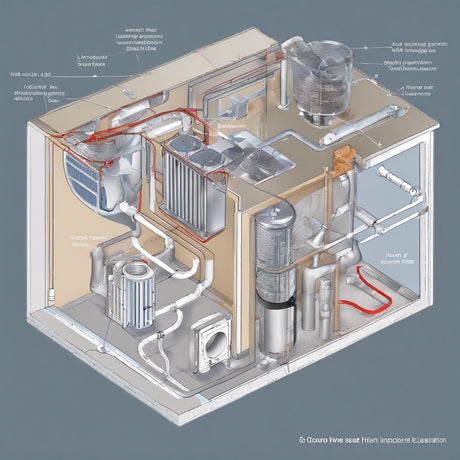- No products in the cart.
Optimizing HVAC Ductwork: Enhancing System Performance and Efficiency
11
Mar
Introduction: HVAC (Heating, Ventilation, and Air Conditioning) systems are crucial for maintaining indoor comfort and air quality in residential, commercial, and industrial buildings. While much attention is often given to the components like furnaces, air conditioners, and thermostats, the ductwork plays an equally significant role in determining the overall performance and efficiency of the HVAC system. In this article, we will delve into the impact of HVAC ductwork on system performance and explore ways to optimize it for better efficiency and comfort.
Importance of Efficient Ductwork: The ductwork serves as the circulatory system of an HVAC system, distributing conditioned air from the central unit to various rooms and returning air back for reconditioning. However, inefficient ductwork can lead to several problems, including:
-
Air Leakage: Holes, gaps, and poorly sealed joints in ductwork result in air leakage, leading to energy waste and reduced system efficiency. It forces HVAC systems to work harder to compensate for the lost air, increasing energy consumption and utility bills.
-
Poor Air Distribution: Uneven air distribution due to improperly sized or designed ductwork can result in hot and cold spots within the building, leading to discomfort for occupants.
-
Reduced Air Quality: Leaky ducts can draw in contaminants such as dust, allergens, and pollutants from attics, crawl spaces, or wall cavities, compromising indoor air quality and potentially impacting occupants' health.
-
Decreased System Lifespan: The strain on HVAC components caused by inefficient ductwork can lead to premature wear and tear, reducing the lifespan of the system and necessitating costly repairs or replacements.
Optimizing HVAC Ductwork: To maximize HVAC system performance and efficiency, it's essential to optimize the ductwork. Here are some strategies to achieve this:
-
Proper Design: Ductwork should be designed meticulously, considering factors such as airflow requirements, building layout, and insulation needs. Proper sizing of ducts ensures adequate airflow to all areas of the building, minimizing pressure imbalances and optimizing system performance.
-
Sealing and Insulation: Sealing duct joints with mastic or specialized tapes and insulating ducts in unconditioned spaces prevents air leakage and minimizes energy loss. Additionally, insulation helps maintain consistent temperatures within the ductwork, reducing heat gain or loss during transit.
-
Regular Maintenance: Regular inspections and maintenance of ductwork are essential to detect and repair any leaks, damage, or blockages promptly. Cleaning ducts removes accumulated debris and ensures optimal airflow and indoor air quality.
-
Balancing Dampers: Installing balancing dampers in duct branches allows for fine-tuning of airflow to different zones, ensuring uniform temperature distribution throughout the building.
-
Utilizing Advanced Technologies: Advancements in HVAC technology, such as zoning systems, variable-speed fans, and smart thermostats, can further enhance ductwork performance and energy efficiency by optimizing airflow based on occupancy and usage patterns.
Conclusion: The impact of HVAC ductwork on system performance cannot be overstated. Properly designed, installed, and maintained ductwork is essential for maximizing energy efficiency, indoor comfort, and air quality. By implementing strategies such as proper design, sealing and insulation, regular maintenance, and utilizing advanced technologies, building owners and occupants can enjoy the benefits of a highly efficient and comfortable indoor environment while minimizing energy costs and environmental impact. Investing in optimizing HVAC ductwork is not only a wise decision for immediate benefits but also a long-term investment in sustainability and occupant well-being.













